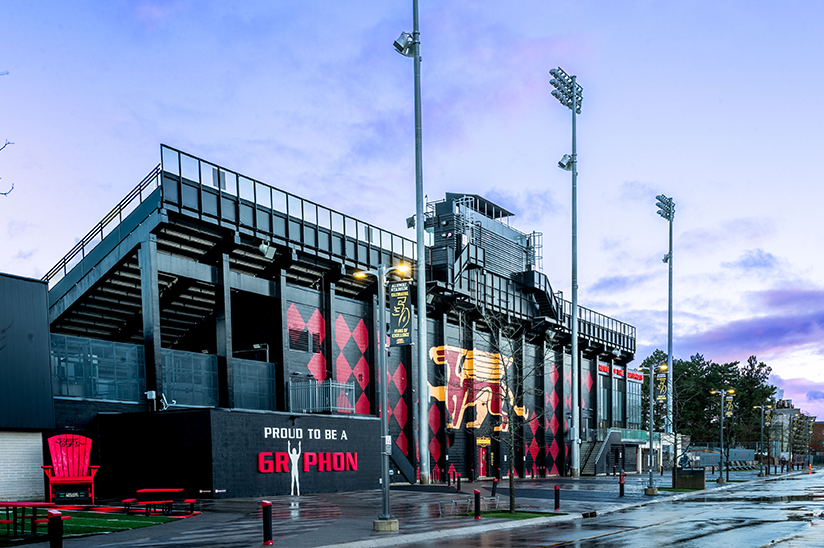Client: Laurentian University
Location: Sudbury, Ontario
Size: 2,800 m² (30,139 ft2)
The Vale Living with Lakes Centre (VLWLC) is a multidisciplinary research and educational institute designed to assist in the protection and management of northern aquatic ecosystems. Located at Laurentian University in Sudbury—an area with a history of environmental damage caused primarily by industrial mining activities—the VLWLC is designed to help restore its surrounding ecology and tackle the prominent environmental issues of the 21st century, such as climate change and the scarcity of clean freshwater.
For the first time, a design team collaborated with internationally recognized scientists with expertise in protecting and restoring industrially damaged ecosystems to inform the building’s design. Housing the Cooperative Freshwater Ecology Unit—which includes members from Laurentian University, the Ontario Ministry of Natural Resources, and the Ontario Ministry of the Environment—the VLWLC includes offices, multimedia rooms, open-area wet laboratories, and a watershed research facility. An open plan and large windows prioritize views to the lake, echoing the importance of the work done by the building’s occupants.
The building systems and materials integrate with the landscape, forming a positive loop that improves water quality and increases biodiversity. Reminiscent of the glaciers that shaped the boreal shield landscape, the flowing structure follows the contours of the site’s topography and shoreline, integrating itself into the local ecology while embracing and highlighting the landscape’s natural features. The exterior is clad in eastern white cedar, a classic shoreline tree species, and the structural frame of jack pine is suggestive of the ancient boreal forests of the region. Locally sourced, nontoxic materials were prioritized throughout the project, and green roofs with native blueberry cover act as an extension of the landscape to reduce stormwater runoff and provide a habitat for wildlife. The extensive use of local limestone in the cladding helps neutralize acidic stormwater runoff while referencing Sudbury’s United Nation’s award-winning land reclamation program. Not only does the building itself act as a filter to improve Sudbury’s drinking water supply, but the project developed synergies with the hydrology of the site to drastically reduce water use by 72%, integrating the building with the clients’ research of human effects on aquatic ecosystems.
With climate change a focus of the VLWLC’s research, the LEED Platinum building was also designed to maximize energy efficiency and to be adaptable to a 2050 climate. Window shading, a high performance thermal envelope, and energy-efficient lighting work in conjunction with various passive design strategies, such as natural lighting and ventilation, to improve efficiency. Projected to achieve a 65% energy reduction, the project’s mechanical system allows the building to become more efficient over time. Furthermore, by maximizing energy efficiency, the VLWLC is able to significantly reduce its operating costs, allowing the institute to invest more of its funding into research—a primary goal of the project.
The VLWLC has won numerous prestigious awards, including an Award for Green Building Wood Design (Ontario Wood WORKS!), Award of Excellence (Association of Consulting Engineers of Canada), North American Award of Sustainable Construction (Holcim Foundation), OAA Design Excellence Award and OAA Sustainable Design Excellence Award (Ontario Association of Architects










